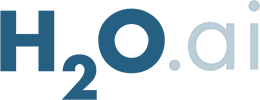The AI Revolution: Bridging Innovation and Implementation
November 22, 2024, 4:09 am

Location: United States, California, Fremont
Employees: 10001+
Founded date: 1984
Total raised: $360.05M

Location: United States, California, Mountain View
Employees: 201-500
Founded date: 2012
Total raised: $332.5M
In the bustling world of technology, artificial intelligence (AI) is the new gold rush. Companies are racing to harness its power. Yet, many stumble on the path from concept to execution. The landscape is littered with ambitious projects that never quite take flight. But recent developments signal a shift. New tools and partnerships are emerging, designed to help businesses not just dream, but deliver.
Statsig and Microsoft have teamed up to create a robust integration for Azure AI. This partnership aims to provide developers with the tools they need to optimize AI applications. The Statsig <> Azure AI Integration is a game changer. It offers a comprehensive toolkit for configuring AI models, tracking performance, and running experiments. This is not just a minor upgrade; it’s a leap forward.
Historically, developers faced a maze of fragmented tools. Many were left to navigate this complexity alone. Now, with the Statsig Azure AI SDK, the fog is lifting. This SDK simplifies the implementation of AI features. It abstracts the technical intricacies of direct API calls. Developers can focus on what matters: building innovative applications.
Statsig’s collaboration with Microsoft is a beacon for AI companies. OpenAI, Anthropic, and Figma are among those who have benefited from Statsig’s capabilities. They’ve leveraged these tools to enhance their products and release new features. The message is clear: experimentation is key. Companies that embrace this mindset can iterate quickly and adapt to user needs.
Meanwhile, PwC is making waves with its Google Cloud AI Experience Zones. These hubs are designed to immerse clients in the world of generative AI. Located in major cities like Bengaluru, Boston, and San Francisco, these zones offer hands-on experiences with cutting-edge solutions. PwC is not just showcasing technology; it’s redefining how businesses interact with AI.
The Google Cloud partnership allows PwC to deliver tailored solutions across various industries. From healthcare to retail, the applications are vast. For instance, the Healthcare Agent Hub aims to alleviate clinician workloads. This enables healthcare professionals to focus on what truly matters: patient care.
Generative AI is another focal point. PwC’s GenAI capabilities empower businesses to enhance productivity and creativity. This technology is not just a tool; it’s a catalyst for transformation. Companies can harness AI to create personalized experiences and streamline operations.
The demand for AI solutions is surging. According to PwC’s 2024 Cloud and AI Business Survey, leveraging AI is the top driver for increased cloud budgets. Businesses recognize that AI is no longer optional; it’s essential. As AI becomes intertwined with business strategies, companies must adapt or risk falling behind.
Both Statsig and PwC highlight a crucial truth: trust is the foundation of innovation. As companies explore AI’s potential, they must also prioritize ethical considerations. The integration of AI into business processes should not compromise integrity. Instead, it should enhance transparency and accountability.
The collaboration between Statsig and Microsoft exemplifies this balance. By providing developers with the right tools, they are fostering an environment of responsible innovation. This partnership is not just about technology; it’s about empowering people. It’s about enabling developers to create solutions that address real-world challenges.
Similarly, PwC’s Google Cloud AI Experience Zones serve as collaborative spaces. They encourage brainstorming and exploration. Clients can engage with AI in a supportive environment. This approach demystifies technology and fosters creativity. It’s about unlocking potential and reimagining what’s possible.
As the AI landscape evolves, the need for robust frameworks becomes increasingly apparent. Companies must invest in tools that support experimentation and optimization. The Statsig Azure AI SDK is a prime example of this shift. It provides a streamlined approach to implementing AI features, allowing businesses to focus on innovation.
Moreover, the partnership between PwC and Google Cloud underscores the importance of strategic alliances. By combining expertise, these companies are creating a powerful ecosystem. This collaboration enables businesses to leverage the full potential of AI. It’s a win-win scenario, where innovation thrives and clients benefit.
In conclusion, the AI revolution is well underway. Companies like Statsig and PwC are leading the charge. They are bridging the gap between innovation and implementation. With the right tools and partnerships, businesses can navigate the complexities of AI. The future is bright for those willing to embrace change. As the landscape continues to evolve, one thing is clear: the journey has just begun.
Statsig and Microsoft have teamed up to create a robust integration for Azure AI. This partnership aims to provide developers with the tools they need to optimize AI applications. The Statsig <> Azure AI Integration is a game changer. It offers a comprehensive toolkit for configuring AI models, tracking performance, and running experiments. This is not just a minor upgrade; it’s a leap forward.
Historically, developers faced a maze of fragmented tools. Many were left to navigate this complexity alone. Now, with the Statsig Azure AI SDK, the fog is lifting. This SDK simplifies the implementation of AI features. It abstracts the technical intricacies of direct API calls. Developers can focus on what matters: building innovative applications.
Statsig’s collaboration with Microsoft is a beacon for AI companies. OpenAI, Anthropic, and Figma are among those who have benefited from Statsig’s capabilities. They’ve leveraged these tools to enhance their products and release new features. The message is clear: experimentation is key. Companies that embrace this mindset can iterate quickly and adapt to user needs.
Meanwhile, PwC is making waves with its Google Cloud AI Experience Zones. These hubs are designed to immerse clients in the world of generative AI. Located in major cities like Bengaluru, Boston, and San Francisco, these zones offer hands-on experiences with cutting-edge solutions. PwC is not just showcasing technology; it’s redefining how businesses interact with AI.
The Google Cloud partnership allows PwC to deliver tailored solutions across various industries. From healthcare to retail, the applications are vast. For instance, the Healthcare Agent Hub aims to alleviate clinician workloads. This enables healthcare professionals to focus on what truly matters: patient care.
Generative AI is another focal point. PwC’s GenAI capabilities empower businesses to enhance productivity and creativity. This technology is not just a tool; it’s a catalyst for transformation. Companies can harness AI to create personalized experiences and streamline operations.
The demand for AI solutions is surging. According to PwC’s 2024 Cloud and AI Business Survey, leveraging AI is the top driver for increased cloud budgets. Businesses recognize that AI is no longer optional; it’s essential. As AI becomes intertwined with business strategies, companies must adapt or risk falling behind.
Both Statsig and PwC highlight a crucial truth: trust is the foundation of innovation. As companies explore AI’s potential, they must also prioritize ethical considerations. The integration of AI into business processes should not compromise integrity. Instead, it should enhance transparency and accountability.
The collaboration between Statsig and Microsoft exemplifies this balance. By providing developers with the right tools, they are fostering an environment of responsible innovation. This partnership is not just about technology; it’s about empowering people. It’s about enabling developers to create solutions that address real-world challenges.
Similarly, PwC’s Google Cloud AI Experience Zones serve as collaborative spaces. They encourage brainstorming and exploration. Clients can engage with AI in a supportive environment. This approach demystifies technology and fosters creativity. It’s about unlocking potential and reimagining what’s possible.
As the AI landscape evolves, the need for robust frameworks becomes increasingly apparent. Companies must invest in tools that support experimentation and optimization. The Statsig Azure AI SDK is a prime example of this shift. It provides a streamlined approach to implementing AI features, allowing businesses to focus on innovation.
Moreover, the partnership between PwC and Google Cloud underscores the importance of strategic alliances. By combining expertise, these companies are creating a powerful ecosystem. This collaboration enables businesses to leverage the full potential of AI. It’s a win-win scenario, where innovation thrives and clients benefit.
In conclusion, the AI revolution is well underway. Companies like Statsig and PwC are leading the charge. They are bridging the gap between innovation and implementation. With the right tools and partnerships, businesses can navigate the complexities of AI. The future is bright for those willing to embrace change. As the landscape continues to evolve, one thing is clear: the journey has just begun.